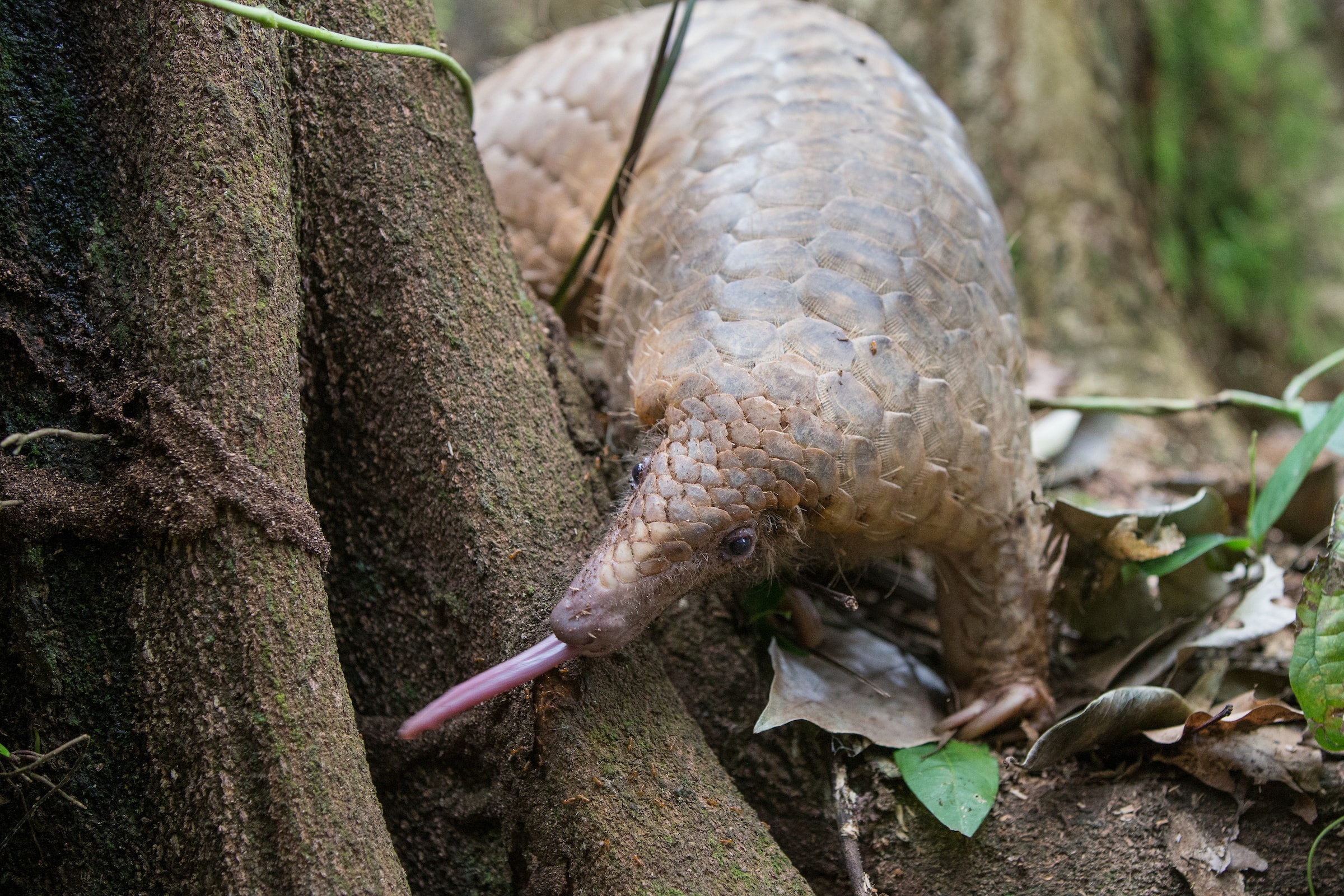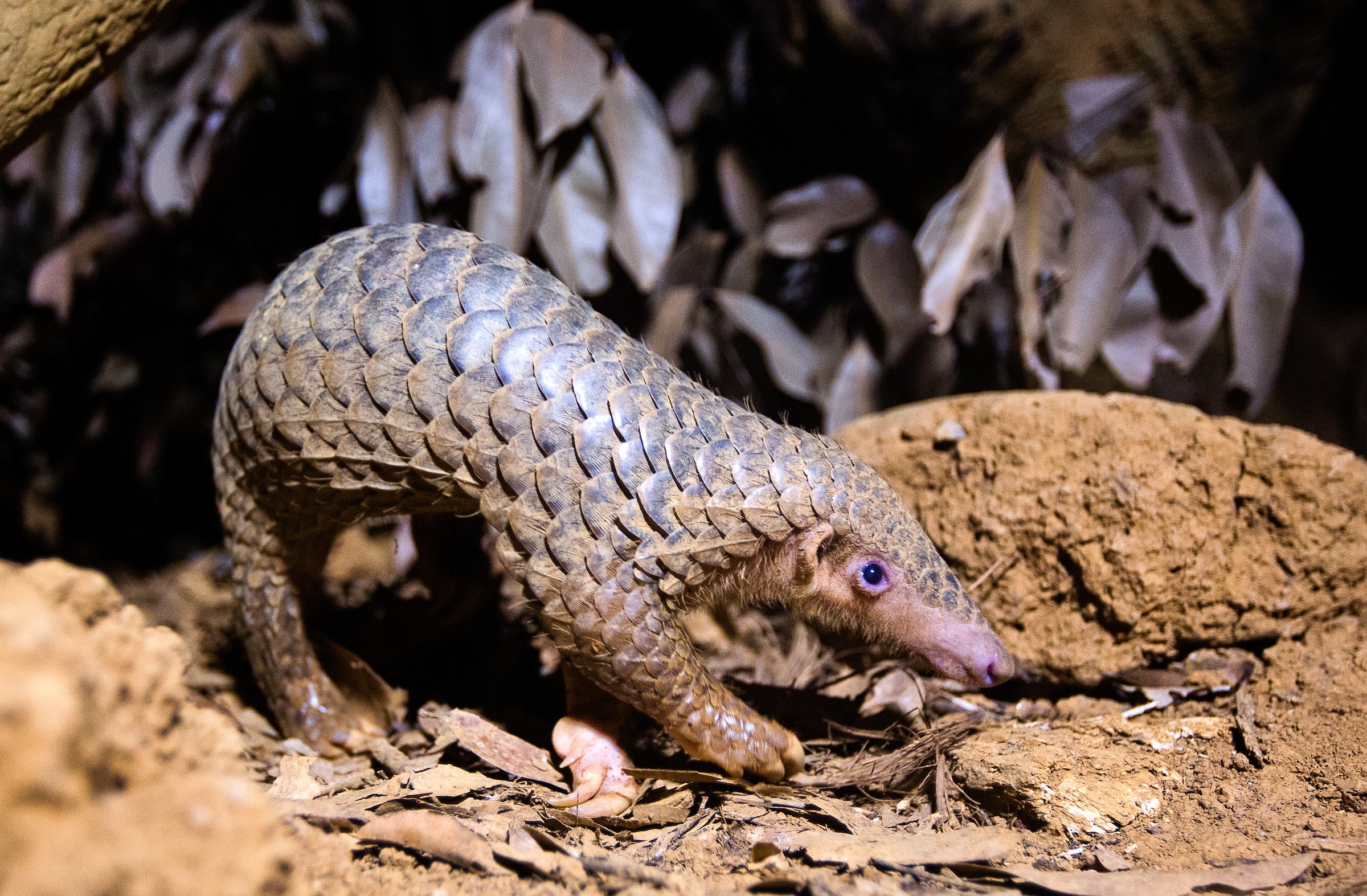From the Sumatran tropical forests to the African savanna, pangolins keep the insect populations of their ecosystems in check.
Wherever an immense number of ants and termites exist, a pangolin is sure to be found and ready to feast on at least 70 million insects per year. Their ravenous appetite plays a crucial role in regulating ant and termite populations and aids in maintaining balance in the ecosystem by preventing insects from over-harvesting trees and eroding the soil.

Their role as nature’s pest control also serves to directly benefit people. In Namibia, a study determined that having pangolins near agricultural fields could save farmers more than $4 million USD from crop loss and damage made by ants and termites.
Pangolins additionally play a role in the health of the land as “ecosystem engineers.” As they burrow for meals and carve out their underground dens with their trowel-like claws, pangolins tend to the health of the soil by spreading minerals and aerating the earth, nourishing increased plant germination.

Undoubtedly, conserving pangolins in their native habitats is fundamental for sustaining healthy rainforest and grassland habitats across Africa and Asia.

